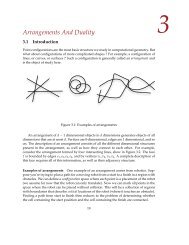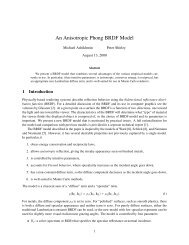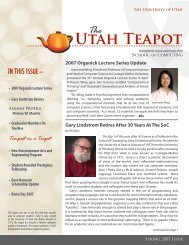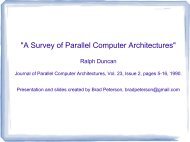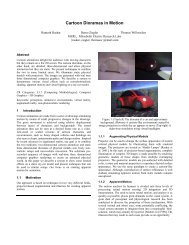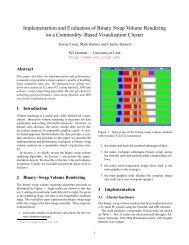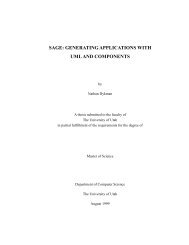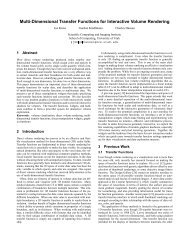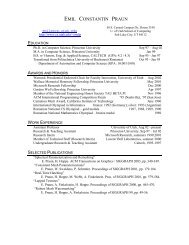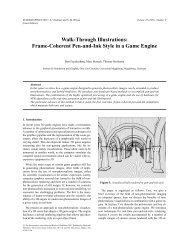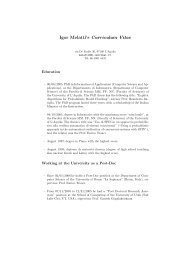CAGD II – COURSE PROJECT
CAGD II – COURSE PROJECT
CAGD II – COURSE PROJECT
You also want an ePaper? Increase the reach of your titles
YUMPU automatically turns print PDFs into web optimized ePapers that Google loves.
separately. And when the coarser geometry is updated, make the appropriate changes to<br />
the finer geometry.<br />
Another idea that has been tried is, when we update the finer level, try and update the<br />
coarser geometry and get the closest possible approximation to the finer geometry in the<br />
least square sense (since we cannot get an exact representation using the basis functions<br />
of the coarser level)<br />
Also we need a means to specify motion of control point in 3D. This has been done by<br />
computing the partial derivatives and the normal of the surface at the node value<br />
corresponding to the control point.<br />
3.1 SPECIFYING CONTROL POINT POSITION BY DEFINING A LOCAL<br />
COORDINATE SYSTEM<br />
Specifying motion in 3D is a difficult problem. So instead when a user selects a control<br />
point and wants to move it, an orthonormal basis (u1,v1,n1) is displayed at that point with<br />
normal n1 pointing to the normal to the surface at that point, and u1 and v1 in the tangent<br />
plane at that point. This makes it intuitive and easy to specify motion.




